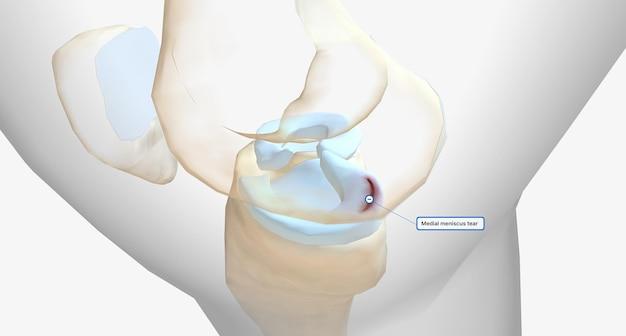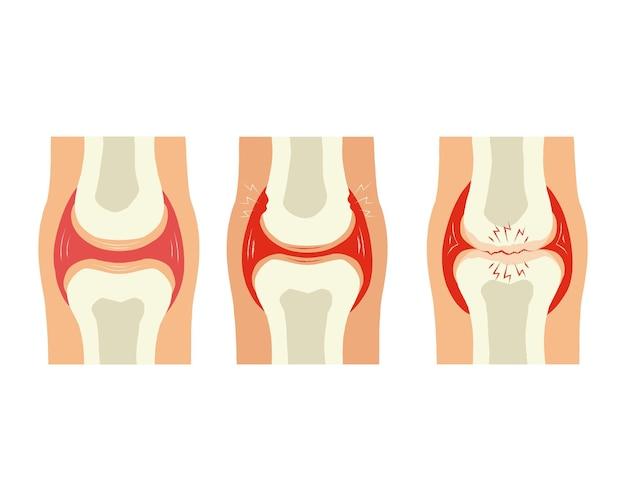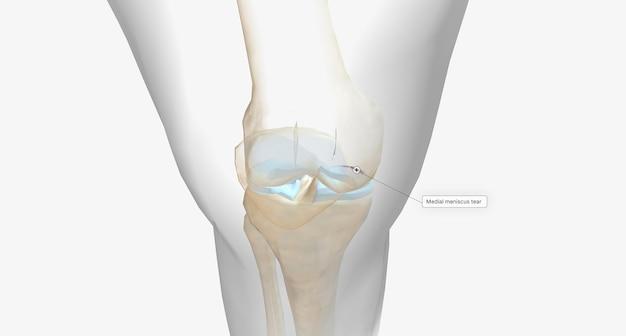Radial meniscus tears are a common knee injury that can cause significant pain and discomfort. If you’ve recently been diagnosed with a radial meniscus tear, you may be wondering if surgery is necessary for treatment. In this blog post, we will explore the different treatment options available for radial meniscus tears, including whether or not surgery is required. So, let’s dive in and find out the best way to heal your injured knee!
What is a Radial Meniscus Tear
A radial meniscus tear is a common injury that affects the crescent-shaped cartilage discs within the knee joint. These shock absorbers, known as the menisci, play a vital role in maintaining stability and preventing friction between the thighbone (femur) and the shinbone (tibia). When a tear occurs in the outer edge of the meniscus, it is referred to as a radial meniscus tear.
The Dreadful Meniscus Tear
So, picture this: you’re on the basketball court, smoothly dribbling towards the hoop, when all of a sudden, POP! Your knee feels like it’s just taken a casual trip to the fifth circle of hell. Yep, that excruciating pain you’re experiencing might just be a radial meniscus tear, my friend.
The Culprit: Causes and Risk Factors
While the exact cause of a radial meniscus tear can vary, it often occurs due to sudden twisting or rotation of the knee joint. Poor body mechanics, excessive force or pressure on the knee joint, or a seemingly harmless misstep can all be culprits. This means that not even the grace of a ballet dancer can save you from this pesky injury. Additionally, some individuals may be more predisposed to radial meniscus tears, especially those involved in high-impact activities or sports like soccer, football, or my personal favorite, lawn bowling.
Symptoms that Make You Go “Ouch!”
Oh, the telltale signs of a radial meniscus tear! If you’ve ever experienced one, you’ll probably never forget them. You see, this injury likes to make its presence known through symptoms such as pain, swelling, stiffness, and a limited range of motion. Walking might turn into a questionable performance of interpretive dance, and you might find yourself becoming envious of penguins and their effortless waddle.
Diagnosis: Time to Play Detective
When it comes to diagnosing a radial meniscus tear, it’s not as simple as just pulling out a magnifying glass and saying, “Ah, there it is!” No, we need some investigative work. First, your doctor will take a thorough medical history and conduct a physical examination. Then, they might order imaging tests like an MRI (Magnetic Resonance Imaging) to get a closer look at your knee’s inner workings. It’s like giving the knee joint its very own paparazzi moment!
Treatment: No Duck Tape Required
Luckily, treating a radial meniscus tear doesn’t involve strapping your knee together with duct tape and hoping for the best. Phew! Depending on the severity of the tear, various treatment options are available. Conservative approaches include rest, ice, compression, and elevation (R.I.C.E.), as well as physical therapy to strengthen the surrounding muscles. In some cases, though, surgical intervention may be necessary. Don’t worry; the surgeon won’t pull a David Copperfield and make your meniscus disappear. Instead, they’ll repair or remove the torn fragments, allowing you to get back on your feet in no time.
Prevention: Better Safe Than Sorry
Now that you’ve experienced the dreaded radial meniscus tear, you’re probably motivated to avoid a repeat performance. Fear not, my adventurous friend! While it’s not a guarantee against all knee injuries, there are preventive measures you can take. Make sure to warm up before physical activities, maintain strong leg muscles through regular exercise, and always use proper technique and equipment when practicing your favorite sports. And hey, remember to listen to your body when it tells you it needs a break. Rest is just as important, if not more so, than the adrenaline-fueled action.
Ready to Bounce Back
Although a radial meniscus tear may initially slow you down, with the proper treatment and a dash of patience, you’ll be back in action before you know it. So lace up those sneakers, keep your knees happy, and remember, even when life tears you apart, your meniscus can always be repaired. Well, that’s certainly something to tear up the dance floor about!
Radial Tear of Medial Meniscus Treatment
A radial tear of the medial meniscus can cause a lot of discomfort and interfere with your daily activities. So, it’s essential to know the symptoms to identify if you have this condition. The most common signs include sharp knee pain, swelling, difficulty straightening your leg, or a feeling like your knee is locking. Don’t worry, though, proper treatment can help you recover and leave you humming your favorite tunes while strolling around.
Non-Surgical Treatments for Radial Tear of the Medial Meniscus
When it comes to treating a radial tear of the medial meniscus, surgery isn’t always the first option. There are effective non-surgical treatments available that can leave you feeling like a ninja in no time. First off, you’ll want to take a break from high-impact activities like dancing on your favorite boy band tunes or chasing after your mischievous pet. Give your knee some rest, apply ice to control the swelling, and elevate your leg to ease the pain. Physical therapy, involving exercises that strengthen your knee muscles, can also do wonders. Oh, and let’s not forget about the power of anti-inflammatory medications to help reduce the swelling. Just remember to consult your doctor before popping any pills.
Surgical Procedures for Radial Tear of the Medial Meniscus
If the non-surgical approach doesn’t have you doing cartwheels yet, you might need to consider surgical options to repair that pesky radial tear. Arthroscopic surgery, the go-to for meniscus tears, involves making small incisions and using a tiny camera to guide the surgeon’s hands. It’s like playing a real-life video game, but with a skilled professional at the controls. During the surgery, the torn portion of the meniscus is either stitched back together or, if necessary, removed. Rehabilitation after surgery includes more than just channel surfing on the couch. Physical therapy will be at the core of your recovery journey, ensuring you regain strength, stability, and flexibility in that precious knee of yours.
Recovery and Rehabilitation for Radial Tear of the Medial Meniscus
Now, brace yourself for the recovery process after your radial tear of the medial meniscus treatment. It’s crucial to keep expectations in check and be patient, even if you’re feeling as eager as a squirrel chasing after its next acorn. Your knee needs time to heal, so gradual return to activities is key. You’ll start with gentle exercises, like range-of-motion movements, before progressing to more challenging ones. Remember, Rome wasn’t built in a day, and neither will your knee fully recover overnight. Trust the process, work closely with your physical therapist, and soon enough, you’ll be kicking and jumping like a trampoline champion!
Prevention and Long-Term Health for the Medial Meniscus
After experiencing the whole shebang of a radial tear of the medial meniscus, you’ll want to take some precautions to prevent future knee mishaps. So, let’s not take this lightly, alright? Strengthening your leg muscles, particularly those around the knee, is a fantastic line of defense. Incorporating exercises that focus on the quadriceps, hamstrings, and calves into your fitness routine will help create a sturdy foundation for your meniscus to stand on. Don’t forget to warm up before any intense activities and wear proper footwear that offers support like your grandma’s tight hugs. Lastly, if you ever feel that lingering knee discomfort or suspect something is amiss, don’t hesitate to consult your trusted orthopedic professional for a thorough check-up.
When it comes to treating a radial tear of the medial meniscus, you have options up your sleeve. Non-surgical treatments can work wonders, but if push comes to shove, surgical procedures may be necessary. Recovery and rehabilitation will be your faithful companions throughout the healing process. Remember, your knee is an intricate mechanism, and taking care of it is essential to keep you moving like a well-oiled human machine. So, stay proactive, be cautious, and never shy away from seeking expert advice when needed. The road to knee health might have a few bumps, but with the right treatment and a sprinkle of determination, you’ll be back on your feet, strutting your stuff, and enjoying life to the fullest.
Do Radial Meniscus Tears Require Surgery
A radial meniscus tear can be a significant cause of knee pain and discomfort. But the big question is, do these tears always require surgery? Let’s dive into the world of radial meniscus tears and find out.
Understanding Radial Meniscus Tears
Before we discuss whether surgery is necessary, let’s understand what a radial meniscus tear is. The meniscus is a C-shaped piece of cartilage that acts as a cushion between the thigh bone and the shin bone. When a tear occurs in the meniscus, it can cause pain, swelling, and limited mobility.
The Severity of the Tear Matters
Not all radial meniscus tears are created equal. Some tears are minor and can heal on their own with conservative treatments like rest, ice, compression, and elevation (RICE). However, more significant tears may require surgical intervention.
Non-Surgical Options
If your radial meniscus tear is not severe, your doctor may suggest non-surgical treatment options first. These can include physical therapy, pain medication, and the use of assistive devices like crutches or braces. The goal is to reduce pain, improve mobility, and allow the tear to heal naturally.
When Surgery is Necessary
In some cases, surgery may be necessary to treat a radial meniscus tear. Surgical options include arthroscopic procedures where small incisions are made in the knee to repair or remove the torn meniscus. Your doctor will assess the severity of the tear, your overall health, and your goals to determine if surgery is the best course of action.
The Importance of Consultation
Ultimately, whether you need surgery for a radial meniscus tear depends on your unique situation. It’s essential to consult with a qualified medical professional who can evaluate your condition and recommend the most appropriate treatment plan for you.
The Road to Recovery
Regardless of whether surgery is required or not, the road to recovery for a radial meniscus tear can be challenging. Rehabilitation plays a crucial role in regaining strength, stability, and full functionality of the knee. Follow your doctor’s instructions, attend physical therapy sessions, and be patient with the healing process.
So, do radial meniscus tears always require surgery? The answer is no. The severity of the tear, along with other factors, determines the need for surgical intervention. Always consult with your doctor to explore all possible treatment options. Remember, a little RICE can go a long way, and sometimes surgery is the necessary step to get you back on your feet.
Does a Radial Meniscus Tear Need Surgery
When it comes to a radial meniscus tear, the big question on everyone’s mind is whether surgery is necessary. Well, fear not my friend, for I am here to shed some light on this pressing matter with a touch of humor and a whole lot of useful information! So, grab your popcorn and let’s dive in.
Understanding the Radial Meniscus Tear
Before we get to the juicy stuff, let’s take a quick moment to understand what a radial meniscus tear actually is. Now, picture your meniscus as a little cushion between the bones in your knee joint. A radial tear is like a little ninja that cuts through this cushion, causing pain, discomfort, and perhaps a few tears of your own.
The Surgical Dilemma: To Operate or Not to Operate
Ah, the million-dollar question! So, here’s the deal. Not all radial meniscus tears require surgery. In fact, some can heal on their own with a bit of time, love, and a splash of TLC. But cue dramatic music there are cases where surgery is the best option.
When Surgery Becomes the Hero
- Lock, Stock, and Barrel: If your knee locks up and you find yourself doing an impromptu reenactment of the Tin Man, surgery might be necessary to set things right.
- Persistent Pain: If the pain persistently haunts you day and night, despite your best efforts to ice it, elevate it, and sing lullabies to it, surgery might be needed to put an end to the torment.
- On the M.A.S.H List: If your knee is swollen, bruised, and begging for mercy, surgery can swoop in like a hero and help you get back on your feet.
When Surgery Hits the Snooze Button
- Minor Tears: If your tear is small, like the baby toe of tears, your doctor might opt for a conservative approach, like physical therapy or a cozy knee brace.
- Play It Cool: If your knee isn’t causing you too much trouble and you can manage with some R&R, your doctor might recommend non-surgical treatments to let nature work its magic.
The Final Verdict
So, my dear reader, the question of whether a radial meniscus tear needs surgery depends on a variety of factors. It’s a decision that should be made with the guidance of a skilled medical professional who knows the ins and outs of your knee. Remember, your knee is a unique snowflake, and what works for others might not necessarily be your perfect fit.
In the end, whether it’s surgery or not, the most important thing is taking care of your knee and giving it the attention it deserves. So, keep those ice packs handy, elevate those legs, and don’t forget to shower your knee with love. After all, a happy knee is a happy you!
And there you have it, my friend. A comprehensive breakdown of the surgery dilemma when it comes to radial meniscus tears. Now go forth and conquer, armed with the knowledge to make the best decision for your knee. Stay tuned for more knee-scapades in our next chapter!


